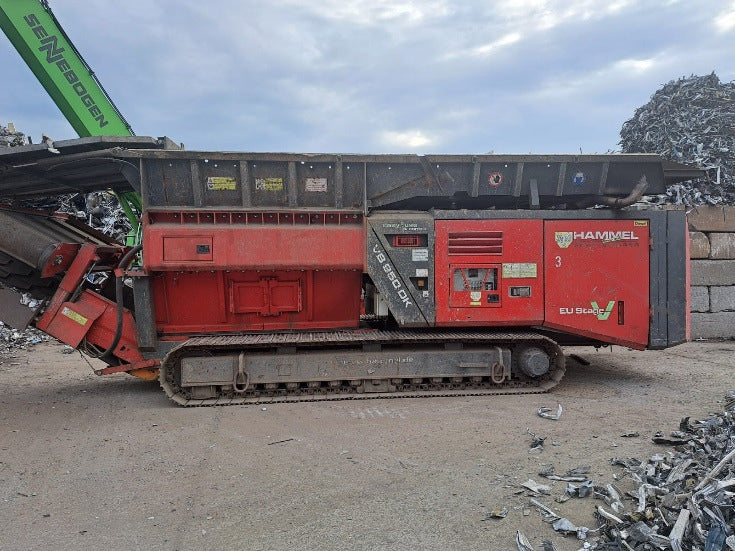
Pre-Shredding for Hammer mills and improved Feeder Yard efficiency
Share
Boost Hammermill Performance with Wolf 9500 and Hammel 950 Pre‑Shredders
Scrap yards are under constant pressure to improve throughput, reduce maintenance costs, and stay competitive in a demanding industry. One of the most effective ways to accomplish this is by using heavy‑duty pre‑shredders like the Wolf 9500 and Hammel 950 ahead of your hammermill — either at your main yard or off‑site in a feeder yard.
This strategy is becoming standard practice across high‑efficiency operations for a good reason: it helps protect your hammermill, increases overall production, and reduces unnecessary transportation and handling costs.
Why Pre‑Shred Before the Hammermill?
The hammermill is often the most expensive and maintenance‑intensive machine in your yard. Feeding it cleaner, more uniform material from a pre‑shredder reduces the strain and increases output.
1. Increased Hammermill Throughput
By reducing scrap size and removing contaminants before they reach the hammermill, pre‑shredding significantly increases production. Consistent feed material allows the hammermill to operate more efficiently and at higher capacity.
2. Eliminate Unshreddables and Minimize Explosions
Pre‑shredders help identify and remove items like sealed tanks, batteries, and other unshreddables before they reach the hammermill. This reduces the risk of damaging explosions or fires and extends the life of your mill’s wear parts.
3. Lower Transportation Costs with Feeder Yards
Placing a Wolf 9500 or Hammel 950 in a feeder yard allows you to process scrap closer to where it's collected. Shredded or downsized material is more compact and efficient to haul. Unlike baling, this method avoids extra labor and time needed to break bales before mill processing.
No Site Prep, No Problem: Mobile, Self‑Contained Units
Both the Wolf 9500 and Hammel 950 are track‑mounted and fully self‑contained, making them ideal for both permanent installations and temporary jobsites. There’s no need for foundation work, electrical hookups, or infrastructure preparation.
- Drive off the truck and start working on day one
- Require no additional setup: no pouring foundations, no setting up power
- Easy to relocate within or between yards
This mobility is especially valuable for feeder yards, new locations, or yards that need a fast deployment with minimal disruption.
Expand Your Capabilities with Pre‑Shredders
Process Prime Scrap Into Busheling
Pre‑shredding allows you to turn prime scrap into clean busheling without having to send it through the hammermill or transport it again. This saves time, lowers costs, and ensures cleaner output ready for mill sale.
Prepare Non‑Ferrous Scrap for the Mill
Aluminum rims, motor blocks, and cast scrap can be downsized and separated using a pre‑shredder. This creates mill‑ready material without overprocessing, improving the quality and value of your non‑ferrous output.
Make the Most of Your Yard with the Right Equipment
Both the Wolf 9500 and Hammel 950 are well‑regarded for their durability, throughput, and ability to handle a variety of scrap types. Whether you're looking to enhance your main yard's production or improve logistics across multiple feeder yards, these machines provide a practical, high‑ROI solution.
Final Thoughts
Adding a pre‑shredder like the Wolf 9500 or Hammel 950 to your operation helps you:
- Maximize hammermill uptime and productivity
- Improve safety by removing hazardous materials early
- Reduce freight and handling costs from remote yards
- Streamline non‑ferrous and prime scrap processing
- Deploy fast with no infrastructure prep, thanks to mobile, self‑contained design
If you're planning to scale your yard, improve margins, or simply reduce hammermill wear, implementing a pre‑shredder is one of the smartest upgrades you can make.
Interested in learning more about pre‑shredders for your scrap yard?
Contact our team to find the right setup for your operation.
